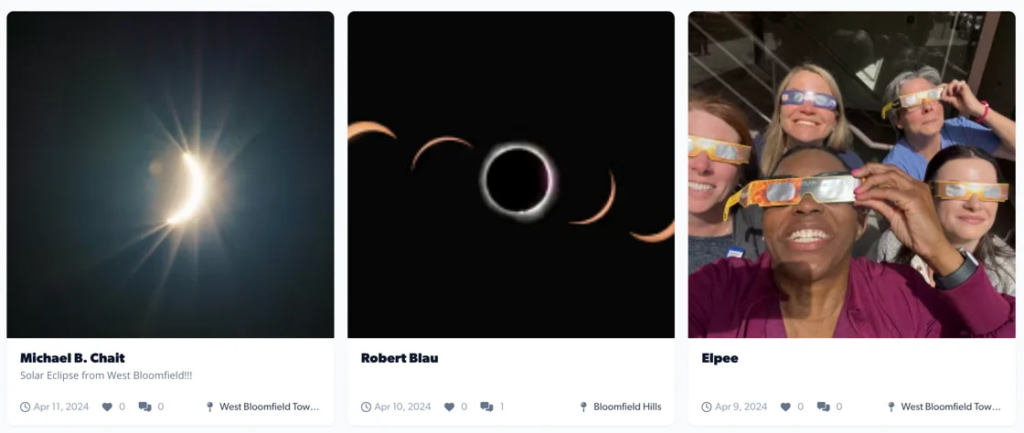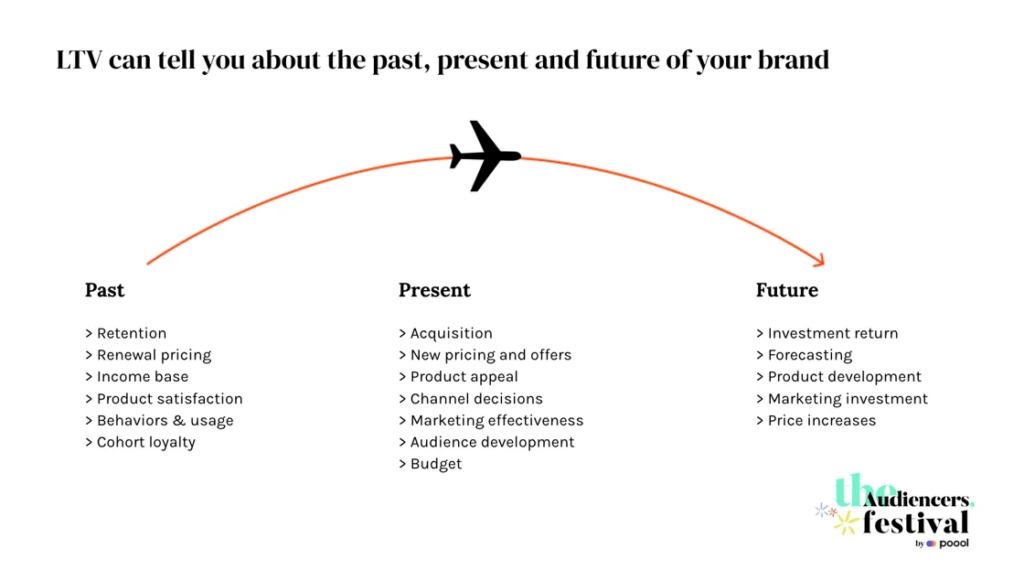

You're reading The Audiencers' newsletter #36, sent out on April 17th, 2023. To receive future newsletters straight to your inbox every two weeks, sign up here.
Convert first, engage later.
There’s been talk lately of cyclone strategies being used by the fastest growing publishers, whereby instead of focussing on engagement pre-subscription, they aim to convert first, and engage later.
The thought process behind this is that readers can experience the value of the premium product through a free or reduced offer, before growing a willingness to pay over time.
For me, however, there are a few hurdles here that I can’t help but share:
- This assumes that readers are going to be engaged and willing enough to pay by the end of the introductory offer, which is often only a few weeks long. And we all know that converting a reader into a loyal subscriber can take months, but usually years.
- I’ll quote the brilliant Kevin from Pugpig here, as he puts it so well: it’s a tactic built in and for the age of traffic monetization. It accepts as law, relatively high churn (~4% monthly, ~45% annually) and low ARPU as the best growth strategy. And yet it ignores the fact that most of these publishers are still struggling to make ends meet for a sustainable future.
- And finally, increasingly more data is proving that readers who create a free account prior to subscribing have higher retention rates and lifetime value.
The traditional ‘engage first’ funnel is therefore arguably more valuable in the long run, especially for smaller publishing brands. But, as always, there’s no one-size-fits-all answer.
In today’s newsletter:
- Community building inspo to steal: Graham media, CBC and Toronto Star share registration success stories
- The 5 C’s of subscription marketing from DIE ZEIT
- TL;DR – A whistle stop tour of the wondrous world of Lifetime Value
- Content to add to your reading list
Community building inspo to steal
Content is a commodity, community on the other hand isn’t – it’s a valuable asset to a publisher’s business model, even more so when it lives on an owned platform.
Graham Media Group, a local TV/broadcasting brand in the US, for instance has taken lessons from social media to develop “Pins”, a photo and video sharing platform reserved for registered users. This content that then be seen by other members and shared in broadcast and digital stories.

^ Members sharing photos during the solar eclipse (Robert’s contribution, wow)
The goal was to develop a strategy that took dependency off other platforms to prioritize audience engagement and community building on-site. Users are encouraged to create an account via the registration wall to move through the funnel towards being ‘insiders’ who come back regularly to the site, attend events and contribute to User Generated Content.
Toronto Star is another great example – they’ve had registration on their site for quite some time, with these logged users proving to be 15x more likely to subscribe. But there was some disconnect in terms of what members were getting. Why should someone register? What would they get as a result of this action?
The strategy: an exploration into the functionalities and experiences that should be unlocked for registered users to drive engagement
The solution:
– Opening commenting up to non-subscribers, but requiring registration is a user tries to like a comment, share a comment or reply to one – since doing this, registrations have increased by 72% and now account for 25% of all registrations

– Adding a notification bell and email has significantly increased volume of comments, replies and time spent in the comment section
– ‘Ask Me Anything’ feature to bring engaged podcast listeners to the site and encourage them to join the conversation
> Dive deeper into community-building examples from Graham Media, CBC and Toronto Star
The 5 C’s of subscription marketing from DIE ZEIT
DIE ZEIT is the leading weekly German-language newspaper, well-known for their long-form, high quality content in print as well as digital. I spoke to Jannick Weissel, Director of Marketing, who shared a framework developed for his team – the 5 C’s of subscription marketing:

When Jannick started in his new role as Director of Marketing at DIE ZEIT several months ago, he recognized that the team was fairly siloed, with only selective and unstructured connection to product, data, editorial, and broader company goals.
Even within the marketing team there was a narrow focus on individual channel KPIs. Most importantly, and like many legacy publishers, editorial work and structures were very much separate to marketing efforts, despite content being the central pillar to a digital subscription model.
“Quality journalism is the reason why people want to read Die Zeit, it’s the foundation of all our work.”
To get started on breaking the silos, Jannick developed the 5 C’s of subscription marketing:
- Content: the publisher’s unique way of sharing trustworthy information, the main product and the USP of DIE ZEIT. Given this, it has to be the core of marketing communications.
- Creative: every touch point is branding. So even performance campaigns need to convey the tone of voice and values of the brand.
- Conversion: depending on the product, funnel step and campaign, the conversion path might differ, but this important aspect of the marketing role needs to be consistent across the brand – easy and engaging.
- Churn: subscribers need to be guided to ensure they make use of the wide range of newly published content and variety of products. Improving subscriber engagement and appreciating their commitment is an important part of marketing efforts.
- Collaboration: in some areas of our work, lines between product, marketing, data and even editorial seem to blur – just think of content marketing for paywalled articles for instance. That’s why it’s crucial to work cross functionally, from ideation to prioritization and implementation.
The goal of this framework wasn’t to completely reinvent the marketing team’s role, but to help them remember the priorities, with content being at the heart. Even when it comes to small things like tone and font for messaging in editorial products vs in marketing campaigns, there needs to be a single voice to ensure consistency at every step of the user journey.
For Jannick it’s too early to draw a conclusion on the efforts. However “it’s encouraging to see the first effects on collaborative thinking, enhanced brand experience and positive business impacts.”
> If you’re interested in implementing cultural change within your organization, particularly encouraging cross-functional collaboration, I’d recommend this article from Lars K. Jensen.
A whistle stop tour of the wondrous world of Lifetime Value
You might have heard the term Customer Lifetime Value (CLV or LTV) being tossed around more and more in the digital publishing universe, and for good reason. Because LTV is unique in that it can tell you about the past, present and future of your business.

Its definition and application, though, can really differ across media outlets.
But, according to Nicolas Galland & Loïc Jalmin, a single definition of CLV won’t cover every need because the needs can vary across companies, among teams within a single company, and even within the same department.
The need-to-know
Whilst it’s acceptable (and normal) to have several definitions coexisting in your company the important thing is to choose the right definition for the job, ensure everyone understands this definition and name things appropriately.
– The first thing to ask yourself is what are you going to put behind the word “value”?
This could be the sum of revenue generated by the customer (also known as Customer Lifetime Revenue), but maybe you could also subtract the cost of acquisition (CAC) from this figure, or even consider all other variable costs (setup costs, server costs, …).
– The second thing to define is what we mean by “lifetime”.
Some customers may stay subscribed for more than 10 years, but does it make sense in your analysis to take into account the revenue that a customer will generate in 10 years time? It’s not uncommon to limit the CLV horizon to 2 or 3 years.
– Finally, CLV can be separated into 2 parts – the value that has already been collected (Historical Value or Earned Value) and the future value (Residual Value). Which are you measuring, and where?
> It’s a heavy topic, but an essential KPI to start integrating into your reader revenue model. Full article worth a read here (we did try to make it “fun” with the title & illustration at least…)
Content to add to your reading list:
- Determining the optimal price for your subscription product, takeaways from Mather Economics’ webinar
- The power of bundling: How publishers can offer more value to subscribers
- Why news organisations are resurrecting their on-site community efforts, And how these community efforts are finding more success than earlier community products
- South Africa’s The Daily Maverick shut down for a day this week “to convey the depth of the crisis that journalism is facing worldwide”

The Audiencers’ newsletter: from professionals to professionals
Sign up to our newsletter – real-life examples, expert points of view and inspirations from publishers around the world to help you do your job better. Sent every two weeks.


